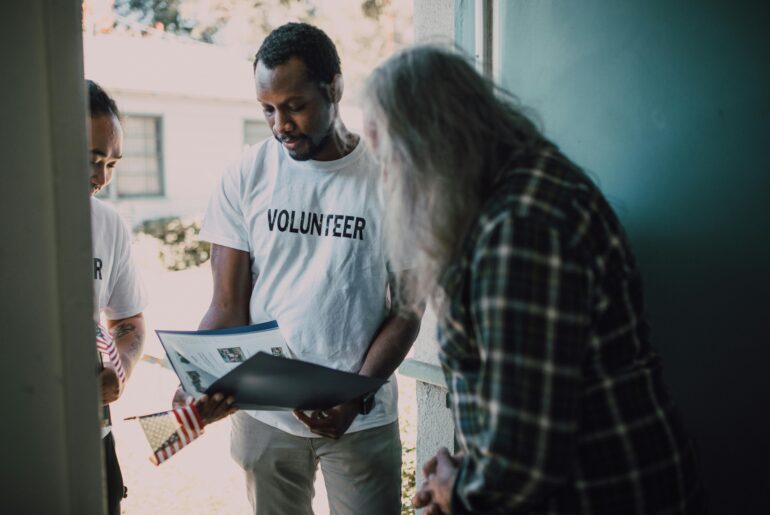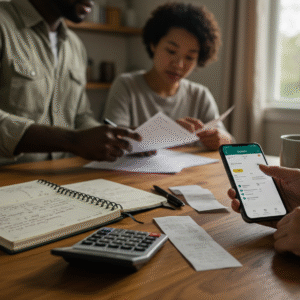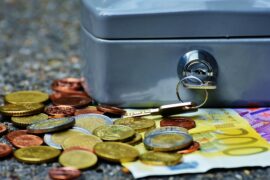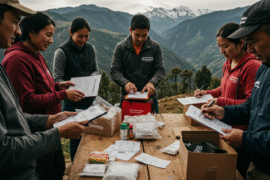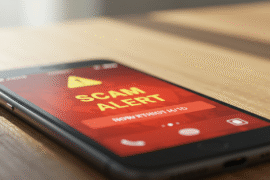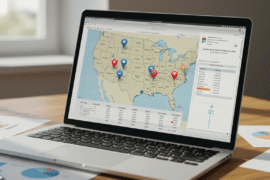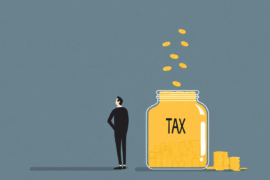This article may contain references to products or services from one or more of our advertisers or partners. We may receive compensation when you click on links to those products or services. Nonetheless, our opinions are our own.
The information presented in this article is accurate to the best of our knowledge at the time of publication. However, information is subject to change, and no guarantees are made about the continued accuracy or completeness of this content after its publication date.
Introduction
Public help programs in the United States are very important for those who have money problems. These programs give people and families a way to get the things they need, like food, healthcare, a place to live, and more. From the Supplemental Nutrition Assistance Program (SNAP) to Medicaid and Temporary Assistance for Families, there are different types of help. Each program is made to work for many kinds of people in many life situations.
Knowing how these programs work and how you can use them can help families get back on their feet. It also helps to make life better for people who need the help. If you are dealing with a money problem for a short time or have low income all the time, you should know what help is out there. It is also important to know where you can apply and how to keep getting help. All of this can really help you. This guide gives you easy steps to follow for getting help. It also shares the main help programs, who can get these, what you get, and how to apply in the right way.
Assistance Programs in the United States
Assistance programs are government-run plans created to give money, food, and other types of support to people facing financial hardship. These services are managed by federal, state, and local agencies, often through social service departments. Different forms of help have been made available, such as food aid, housing support, healthcare coverage, and emergency relief.
Each program is guided by its own rules for eligibility and application. Commonly used programs include SNAP for groceries, Medicaid for health coverage, and Social Security for income support. In many states, additional local programs have been developed to handle energy bills, emergency housing, and other needs. These systems are designed to make sure families and individuals are given access to care and stability when it’s most needed.
Types of Public Help Programs
The table below shows some of the most common help programs:
| Program Name | Purpose | Administered By |
|---|---|---|
| SNAP (Food Stamps) | Provides funds for purchasing groceries | U.S. Department of Agriculture (USDA) |
| Medicaid | Offers free or low-cost health insurance | State Health Departments |
| HEAP | Helps with heating and cooling energy costs | Local/State Energy Agencies |
| TANF (Cash Assistance) | Provides temporary financial aid to low-income families | Local Departments of Social Services |
| Emergency Food Assistance Program (TEFAP) | Distributes emergency food via local groups | USDA and Local Partners |
Each program helps with a different part of daily living costs. Many people get approved for more than one program at the same time.
Who Can Qualify for Help
Eligibility changes with each program. It is usually set by a few important things:
- Household income
- Number of dependents
- Employment status or job-seeking activity
- Disability or medical conditions
- Citizenship or legal resident status
Applicants often have to give papers that show their income, where they live, and who they are. Some programs also ask people to take part in work or job search activities. But people may not have to do this if they have a disability or care for someone.
Voted "Best Overall Budgeting App" by Forbes and WSJ
Monarch Money helps you budget, track spending, set goals, and plan your financial future—all in one app.
Get 50% OFF your first year with code MONARCHVIP
Benefits of These Programs
- Financial Support
Programs like TANF give people money each month. This cash can help pay for things like rent, bills, and other daily needs. The help from the program can make it less likely for people to fall behind on what they owe. It can also stop some from losing their home. - Food Security
SNAP gives electronic EBT cards that you can use at stores that take them. TEFAP gives free emergency food for people who meet the rules. You can get this food at food banks and community centers. - Healthcare Access
Medicaid helps pay for doctor visits, medicines, hospital stays, and basic health checkups. It makes sure that people and families with little money can get the care they need. You will not need to worry about big medical bills if you use this program. - Housing and Utility Support
Programs like Section 8 Housing Choice Vouchers and HEAP help pay for rent and energy bills. They give people more stability. These programs also stop shutoffs or eviction. - Childcare Assistance
Subsidized childcare programs help parents go back to work. They do this by paying for some or all of the cost of daycare and after-school programs. This makes it easier for more people to get back to their jobs.
Financial and Food Resources
The Supplemental Nutrition Assistance Program (SNAP) gives help to people and families with low income so they can buy groceries at stores that are allowed to take SNAP. These benefits make nutrition better and help stop people from running out of food.
In times of crisis or when people suddenly lose their income, the Emergency Food Assistance Program can help fast. Food banks, shelters, and local programs give out food to people in need right away. This help is important for families who have young children or for those who are seniors.
Support for Rent, Health Coverage, and Childcare for Low-Income Families
Housing help gives support with paying rent, a place to stay right away, and programs that pay people who own the place you rent. You can also get help from your local social service office if you need help to pay late rent. This is so you do not have to leave your home.
Medicaid makes sure that healthcare is easy to get for people who qualify. It helps pay for many services. This can include things like regular visits to the doctor and hospital stays.
Childcare assistance helps parents so they can work or go to school. These programs are given out by state groups. A family may get some or all the cost of care paid, which often depends on how much money the household makes.
How to Start With Assistance Programs
Tips for First-Time Applicants:
- Know the rules for who can get this before you apply.
- Use official government sites so you get safe and true information.
- Get your papers ready, like proof of income, ID, and where you live.
- Get help from local places when you need it.
Getting help from public assistance can be simple when you have the support of trained social workers. You can go to your local department of social services. Another way is to check your state’s main benefits website to begin.
Required Documents for Applying
Here’s a checklist of what most programs require:
| Document Type | Examples |
|---|---|
| Identification | Driver’s license, state ID, birth certificate |
| Proof of Income | Pay stubs, tax returns, unemployment letters |
| Residency Verification | Lease agreement, utility bill |
| Social Security Number | SSN card or official letter |
| Dependent Information | School records, medical documents |
Having these things with you makes it more likely your application will be handled fast and with good results.
How to Apply and Use Your Benefits
| Step | Action | Details |
|---|---|---|
| 1 | Research Programs | Use .gov sites to understand each program’s requirements and benefits. |
| 2 | Gather Documentation | Ensure all proof-of-income, ID, and residency materials are complete. |
| 3 | Submit Application | Apply online or in person at your local DSS office. |
| 4 | Follow Up | Check application status and submit any additional paperwork if needed. |
Use web browsers that are safe. Always go to official sites that end with .gov or .org. This will help keep your information safe when you apply for something online.
Final Thoughts on Assistance Programs
Assistance programs help people and families get through money problems in a safe and respectful way. The support covers things like food, a place to live, health needs, and child care. These programs can help the people who use them find some steadiness in their lives. It is good to know what is needed, what papers to bring, and how the whole thing works so you can get the help you need and use it well.
If you start this process with some planning and keep at it, your household can get help that matters. You need to find out the right info, fill out the forms, and check back sometimes. This can really help you over time. Getting some money help often starts when you know where to begin and you take that first step.
Frequently Asked Questions
Can I apply for more than one assistance program at the same time?
Yes. A lot of people get help from more than one program, like SNAP and Medicaid. The rules for who can get this help can sometimes match.
How do I know if I’m eligible for state-specific programs?
Go to your state’s Department of Social Services website or call the local office. If you want to see if you can get help, they will look at your income, how many people live with you, and the rules in your state.
What can I do if my application is denied?
Request a fair hearing or appeal with your local DSS. Look over your paperwork to make sure everything is right and complete before you send it in again.
How often do I need to reapply or update my information?
Most programs need you to recertify every year. Be sure to update your information if your income, job, or how many people are in your home changes.

Reviewed and edited by Albert Fang.
See a typo or want to suggest an edit/revision to the content? Use the contact us form to provide feedback.
At FangWallet, we value editorial integrity and open collaboration in curating quality content for readers to enjoy. Much appreciated for the assist.
Did you like our article and find it insightful? We encourage sharing the article link with family and friends to benefit as well - better yet, sharing on social media. Thank you for the support! 🍉
Article Title: Where to Apply for Help From U.S. Assistance Programs
https://fangwallet.com/2025/07/16/where-to-apply-for-help-from-u-s-assistance-programs/The FangWallet Promise
FangWallet is an editorially independent resource - founded on breaking down challenging financial concepts for anyone to understand since 2014. While we adhere to editorial integrity, note that this post may contain references to products from our partners.
The FangWallet promise is always to have your best interest in mind and be transparent and honest about the financial picture.
Become an Insider

Subscribe to get a free daily budget planner printable to help get your money on track!
Make passive money the right way. No spam.
Editorial Disclaimer: The editorial content on this page is not provided by any of the companies mentioned. The opinions expressed here are the author's alone.
The content of this website is for informational purposes only and does not represent investment advice, or an offer or solicitation to buy or sell any security, investment, or product. Investors are encouraged to do their own due diligence, and, if necessary, consult professional advising before making any investment decisions. Investing involves a high degree of risk, and financial losses may occur including the potential loss of principal.
Source Citation References:
+ Inspo
USDA Food and Nutrition Service. (2025). SNAP Eligibility. Retrieved June 2025, from USDA.gov
